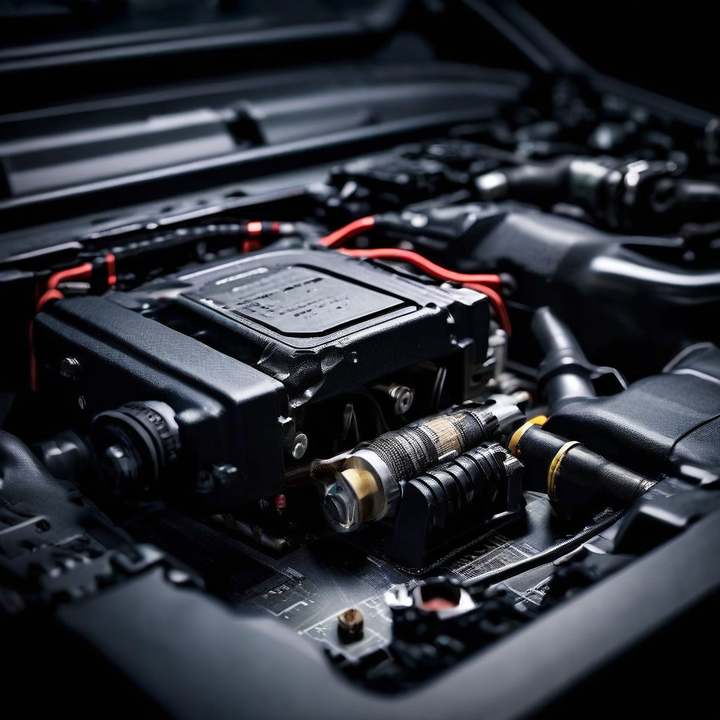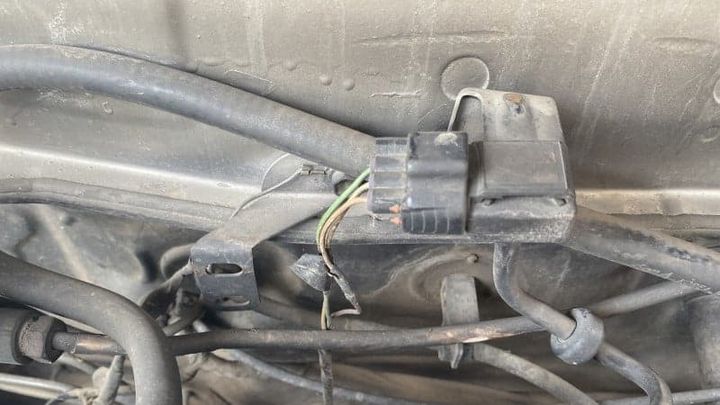


The Manifold Absolute Pressure (MAP) sensor is a crucial component in modern fuel-injected engines. It plays a vital role in the engine management system, ensuring optimal performance, fuel efficiency, and emissions control. This outline aims to provide a comprehensive understanding of the MAP sensor, its functions, and the importance of maintaining its proper operation.

First things first, let's talk about diagnostic trouble codes (DTCs). These pesky codes are stored in your vehicle's computer whenever it detects an issue, such as a faulty MAP sensor. After replacing the sensor, it's crucial to clear these codes to allow the computer to start fresh and adapt to the new component.
| Step | Description |
|---|---|
| 1 | Connect an OBD-II scan tool to your vehicle's diagnostic port |
| 2 | Navigate to the "Clear Codes" or "Erase Codes" function |
| 3 | Confirm the action and wait for the codes to be cleared |
| 4 | Verify that no codes reappear immediately after clearing |
Clearing the codes is like hitting the reset button on your vehicle's computer. It gives the system a chance to relearn and calibrate itself to work seamlessly with the new MAP sensor.
Now that the codes are cleared, it's time to take your vehicle for a spin. But not just any ordinary drive – you'll need to perform a specific drive cycle to help the computer relearn the new MAP sensor's parameters. A drive cycle involves starting the engine from cold and driving under various conditions, such as:
Idling
City driving
Highway driving
The exact drive cycle procedure varies depending on your vehicle make and model, so it's essential to consult your trusty repair manual for the specific steps. Here's a general outline of what a drive cycle might entail:
| Step | Description |
|---|---|
| 1 | Start the engine from cold and let it idle for a few minutes |
| 2 | Drive in stop-and-go city traffic for about 10 minutes |
| 3 | Accelerate to highway speeds and maintain a steady speed for 5-10 minutes |
| 4 | Decelerate and come to a complete stop |
| 5 | Repeat steps 2-4 a couple of times |
By following the drive cycle procedure, you're essentially teaching your vehicle's computer how to interpret the new MAP sensor's readings accurately.
After completing the drive cycle, it's time to verify that the new MAP sensor is functioning correctly. Grab your OBD-II scan tool once again and check for any returning MAP sensor-related codes. If no codes are present and your engine is running smoothly, congratulations! You've successfully replaced and calibrated your MAP sensor.
However, if you do encounter any codes or drivability issues, don't worry. There might be an underlying problem that needs to be addressed, such as vacuum leaks, which we'll discuss next.
Vacuum leaks in the intake system can wreak havoc on your MAP sensor's performance, causing incorrect readings and drivability issues. To ensure your newly installed MAP sensor operates at its best, it's crucial to check for and address any vacuum leaks.
There are two common methods for detecting vacuum leaks:
Smoke Test
Introduce smoke into the intake system using a smoke machine
Visually inspect for smoke escaping from cracks, loose connections, or damaged components
Vacuum Gauge
Connect a vacuum gauge to a vacuum port on the intake manifold
Start the engine and observe the gauge readings
A steady vacuum reading indicates no leaks, while fluctuating readings suggest a leak
If you do find any vacuum leaks, it's essential to repair or replace the affected components before proceeding. Common culprits include:
Cracked or damaged vacuum hoses
Loose or faulty hose connections
Damaged intake manifold gaskets
By eliminating vacuum leaks, you'll ensure that your MAP sensor receives accurate pressure readings, resulting in optimal engine performance and efficiency.
Preventing future MAP sensor issues is just as important as fixing them. Regular maintenance and addressing underlying problems can go a long way in extending the life of your MAP sensor and preventing costly repairs down the road.

Here are some tips to keep your MAP sensor in top shape:
Follow your vehicle's recommended maintenance schedule
Regularly inspect and clean the MAP sensor and related components
Address any vacuum leaks or electrical issues promptly
Use high-quality replacement parts when necessary
By staying on top of maintenance and addressing potential issues early on, you can save yourself the headache of dealing with a faulty MAP sensor in the future.
Now, let's talk about the financial side of MAP sensor replacement. The cost can vary depending on several factors, such as:
Vehicle make and model
Labor costs at the repair facility
Quality of the replacement sensor
On average, you can expect to pay anywhere from $100 to $300 for a MAP sensor replacement. Here's a breakdown of the typical costs:
| Component | Cost Range |
|---|---|
| MAP Sensor | $50 - $200 |
| Labor | $50 - $150 |
| Total | $100 - $300 |
While the cost might seem steep, it's important to remember that a properly functioning MAP sensor is essential for your vehicle's performance, fuel efficiency, and overall health. Neglecting this repair can lead to more serious and expensive issues in the long run.
Replacing a MAP sensor is just the beginning of the journey to restoring your vehicle's optimal performance. By following the steps outlined in this guide – clearing diagnostic trouble codes, performing a drive cycle, verifying proper operation, checking for vacuum leaks, maintaining your vehicle, and considering the cost – you'll be well-equipped to tackle this repair like a pro.
Remember, a little bit of knowledge, patience, and attention to detail can go a long way in keeping your vehicle running smoothly for years to come. So, grab your tools, put on your mechanic's hat, and get ready to conquer that MAP sensor replacement with confidence!
The Manifold Absolute Pressure (MAP) sensor measures the amount of air entering the engine's intake system. This data helps the engine computer calculate the optimal air/fuel mixture for efficient combustion.
Common symptoms of a faulty MAP sensor include poor fuel economy, rough idling, lack of power, stalling, and the check engine light illuminating with related trouble codes.
While it is possible to drive with a faulty MAP sensor, it is not recommended as it can lead to further engine damage and decreased performance. Replace the sensor as soon as possible.
There is no set replacement interval for MAP sensors. Replace it only when it fails or shows signs of malfunction.
Skipping the drive cycle means the engine computer will not have a chance to relearn and adapt to the new sensor's parameters, leading to potential drivability issues.
Yes, vacuum leaks in the intake system can cause incorrect pressure readings from the MAP sensor, triggering related trouble codes.
Regular maintenance, addressing vacuum leaks promptly, using high-quality replacement parts, and following the recommended service schedule can help prevent premature MAP sensor failures.
Replacing the MAP sensor itself is generally a straightforward task. However, the post-replacement steps, such as clearing codes and performing a drive cycle, require some technical knowledge.
While aftermarket MAP sensors are available, it is recommended to use an OEM (Original Equipment Manufacturer) sensor for optimal performance and compatibility with your vehicle's systems.
Other components that can influence MAP sensor readings include the Mass Air Flow (MAF) sensor, throttle body, intake manifold gaskets, and related vacuum hoses and connections.

Sarah isn't your average gearhead. With a double major in Mechanical Engineering and Automotive Technology, she dived straight into the world of car repair. After 15 years of turning wrenches at dealerships and independent shops, Sarah joined MICDOT to share her expertise and passion for making cars run like new. Her in-depth knowledge and knack for explaining complex issues in simple terms make her a valuable asset to our team.












